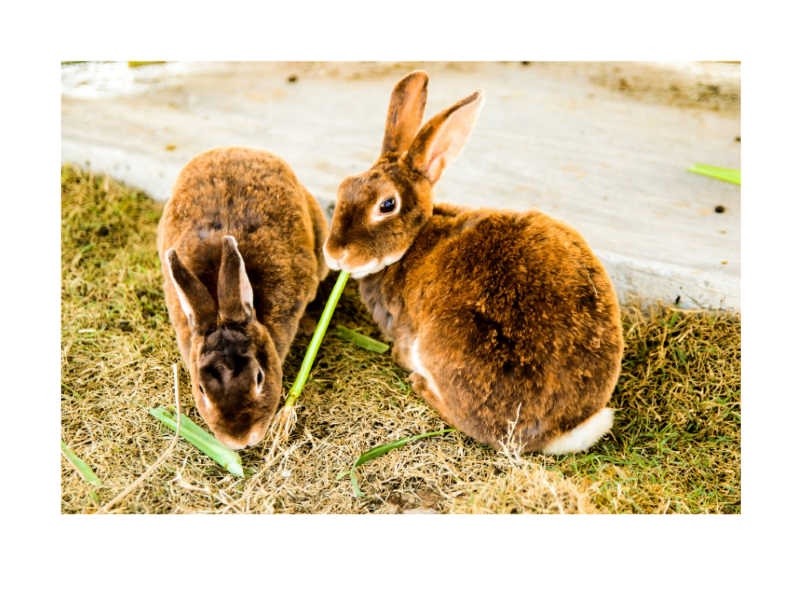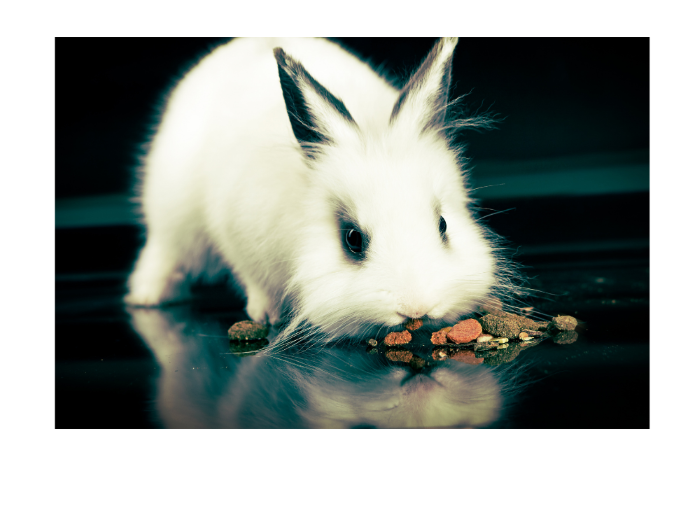Do Rabbits Have A Good Sense Of Taste?
Yes, Rabbits have a strong sense of taste and when compared to Humans, they have an excellent sense of taste! This is because rabbits have about twice as many taste buds as humans and a sense of smell that is 15 to 20 times better than humans.
In this post, we will hit on some key points about how sense of taste and sense of smell work together to help the rabbit’s brain identify and recognize tastes and flavors.
The idea that animals can develop a “Nutritional Wisdom” about the food they find in their environment is fascinating!
How Does Rabbit Sense of Taste Work? How Does A Rabbit Taste Its Food?
Like humans, rabbits taste primarily using their taste buds. A taste bud is a cluster of receptors, also known as taste cells, that are located on the little bumps on the surface of the tongue (taste cells do rejuvenate and are replaced every 10 to 14 days!). Further, these bumps on the surface of the tongue are called papillae. Rabbits have several kinds of papillae in their mouths, each with a different jobs related to determining different tastes.
In fact, this article by Hartz states that Rabbits can taste or distinguish four tastes: Sweet, Salty, Bitter, Sour. Being able to distinguish taste is very important for many animals, like rabbits, who depend upon foraging plant materials. For example, many bitter tasting plants can be poisonous and sour tasting foods rotted or spoiled. Smell plays an important role in detecting the taste of foods for rabbits!
Another important factor in tasting is a rabbit’s saliva. It helps the rabbit determine how the food tastes by transporting chemical from the food to the taste buds and kick-starting the digestive process of the food.
Do Rabbits Have a Better Sense Of Taste Than Humans?
Researchers believe that rabbits do have a better sense of taste than humans. This belief is because of research that found that rabbits have roughly 17,000 taste buds, while humans have 8,000 to 10,000 taste buds.
This table shows where rabbits and humans rank by the number of taste buds
| Animal | Number of Taste Buds |
| Chicken | 30 |
| Cat | Less Than 500 |
| Dog | 1,700 |
| Human | 8.000 to 10,000 |
| Pig | 14,000 |
| Rabbit | 17,000 |
| Cow | 25,000 |
| Catfish | 100,000 |
However, the number of taste buds is not indicative of the types of tastes that can be detected. For instance, research has determined that cats cannot taste or distinguish sweetness even though they have about 500 taste buds! And humans can distinguish 5 different tastes: salty, sour, sweet, bitter and umami (or savory). Each taste has its own receptors (taste cells) that respond only to that kind of taste.
As stated, the sense of smell is very important to the sense of taste. This video is an excellent overview of how smell and taste work together.
And check this out: the University of California at Santa Barbara has discovered that rabbits have two kinds of taste buds: fungiform papillae on lobes that are shaped like mushroom and foliate papillae on lobes that are shaped like a leaf! Veterinarian Dr. Evan Antin posted an excellent picture of inside a rabbits mouth.
Rabbit Sense of Taste, In-depth Information
This informative scientific article explains that animals mostly determine good food from toxic substances by using their sense of taste. Further, it explains that taste receptor cells must contact water soluble chemicals, from the food or substance being tasted, for the animal to determine the taste of the food. For rabbits, this means the tongue and larynx. This form of taste is known as “contact chemosensation”.
A special note is that, because animals don’t speak, when studying taste in animals researchers must reply on observed visual and audio cues such as rapid licking and sounds of enjoyment vs sounds of dislike!
Furthermore, the article explains that when the required contact occurs, mechanosensitive cells are also detecting and then sending signals to the brain; this helps to determine the texture of the food. However researchers stress that not much in known or understood about how much the chemo-sensitive and mechano-sensitive cells and nerves or circuits interact with each other.
These taste mechanisms are so important for rabbits because the detection of food’s physical properties such as hardness, viscosity, temperature, and texture help them determine if the food is desirable, or its degree of palatability.

Wow! Here is another scientific article, from the Indian Journal of Veterinarian Science packed with interesting information about the interaction between the sense of smell and the sense of taste across the animal kingdom. Here are some interesting, key take-aways from this article.
- Animals build a “nutritional wisdom” as they remember the sensory characteristics of a particular food (smell, taste, feel) and whether that food was pleasing, nutritious, satisfying as opposed to noxious, unsettling, upsetting, unsatisfying.
- Smell contributes to taste. Counterintuitively, it is during exhalation that the smell of the food contributes to the brain’s interpretation of the taste of the food that is in the mouth. This, of course, is opposite to what we think of as smell, which happens when we inhale; simply amazing.
- In nature, toxic substances may often be determined by their taste and smell. For example, alkaloids are poisonous and very bitter. This seems to be one way that nature helps animals to not eat poisonous plants. Similarly, sour taste is naturally associated with rotten or spoiled foods.
- Tasting, or detecting a particular taste, is called gustation.
- Lastly, the loss of sense of smell is called anosmia while the partial loss of sense of smell is called hyposmia.
Will Rabbits Eat Rat Poison?
Yes, rabbits can be fooled by the poisonous rat and mouse baits that are sold commercially and eat them. For more detail: Will Rat Bait Kill Rabbits?
Manufacturers have discovered how to disguise the smell and taste of the lethal active ingredients in poison rat and mouse baits that many people use to keep their homes and buildings pest free. As such, your innocent rabbit can be attracted to rat poison because the same ingredients that attract mice and rats also attracts most rabbits!
Even worse is that some mouse and rat poisons look like the pellets that you might feed your rabbit daily. Please be very careful if you choose to use mouse and rat poison baits. Curious pets and young children may wander and ingest these deadly baits.

Quick Story of Personal Experience
We moved to our hobby farm in 2005. The long, federal style, stone house residence that we moved into was built circa 1785. Over the years it had served as a home to many families as well as housing railroad and foundry businesses.
There were several outbuildings on the property and no doubt there were some mice living in the outbuildings. We also had a new golden retriever puppy. Now, we do not use mouse and rat baits because we have hobby farm animals, pets, and children around our property!
But one day, several weeks after we moved in, we found the puppy dead. There were no signs of a struggle with a local wild animal such as a racoon, fox, or bobcat.
My hunch is that the puppy found and ingested something poisonous, perhaps an old poison rat bait that had been left behind on the property; very likely near or in one of the outbuildings. Be vigilant if you are moving to a rural property!
This post about rabbit sense of taste is part of our larger guide to the 5 senses that rabbits use:
Hearing, Smelling, Seeing, Feeling or Touch, and Taste.
Here is the link to What Senses Do Rabbits Use?
Please click and give it a read! It is full of great information, and I guarantee you will learn something valuable.
Final Thoughts
As we’ve discussed, Rabbits do have a strong sense of taste that helps them eat healthy foods and turn away from poisonous or spoiled foods. Remember that rabbits have about twice as many taste buds as humans and it is believed that rabbits also have a stronger sense of taste than humans.
How does sense of taste work? Primarily through taste buds as receptor cells that activate with a particular tastes, sending a specific signal to the brain. And of course, the sense of smell and sense of feeling also contribute to the brain determining what a particular food tastes like.
Finally, be extra careful if using poison mouse or rat baits to get rid of varmints in your house or near your rabbit hutches as rabbit’s noses and taste buds may not detect the poison and ingest it!

